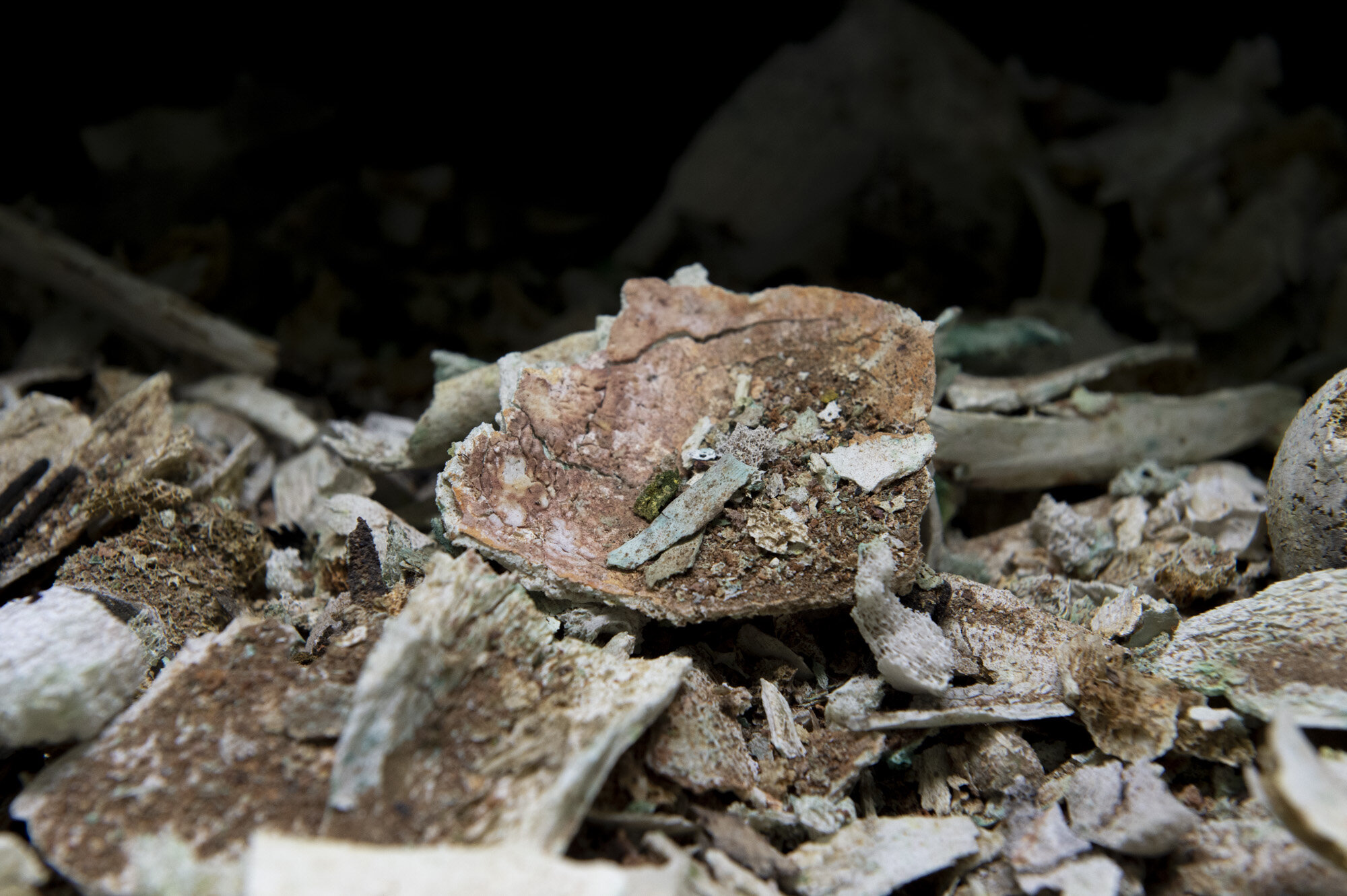Ashes
Photographic Work about the remains after cremation
Zurich, 2020
“Without question: Looking at the ashes, this white-grey powder, means to realize that we are here for a while. But not all of our lives are pulverized towards the end. We also leave traces on this earth and in the people we have met. Life in turn leaves traces in our bodies. The remains, which the photographer Tina Ruisinger captures in pictures after cremation, tell not only about our transitory bodies, but also about the fact that life shapes us, affects us, and we are interwoven with it. Man is not only nature, he is also culture. After his death, he returns to nature completely, and culture has diffused into his body. What remains is stardust. But what remains are also objects from another world: prostheses, pacemakers, bone screws, which we encounter as crowns, planets, filigree nets. Just as individual actions on our bodies survive in the ashes, our actions survive in the world. What remains, therefore, are ultimately our stories. The thread of life that we have woven as a new beginning into the carpet we call human history.” Barbara Bleisch
“At Nordheim Crematorium, I photographed the ashes of 50 deceased people. Each ash bears the name of a person, with its own structures, colors and shapes. No two ashes are alike. As unique as each person is, so are their ashes.
Then there are also the things that do not burn. Things that cannot burn and therefore do not disappear. Things that remain beside the ashes and tell their own story. Hip joints, pacemakers, prostheses have lost their function. And also the personal coffin gifts, a death bell, a five-franc piece, a Swiss army knife. What do they tell us about the person they accompanied?”
“Stripped of their original function, they are transformed into timeless objects. Precious webs, coral-like structures, satellite-like formations. Time has lost its meaning. As silent relics from an alien world, they too pose the question of their own finiteness for the short duration of their becoming visible. In my work I capture this moment of transformation and invite the viewer to dive into this world of thought, and to open up to the questions of life and death.” Tina Ruisinger























